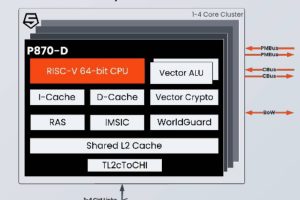 As with the recently released RTX 2000 (Electronics Weekly RTX 2000 Ada GPU meets AI visualisation demands (electronicsweekly.com),the GPUs have both an NPU (neural processing unit) and the company’s RTX GPU, with Tensor cores for local AI acceleration and processing power in laptop computing used in professional design and content creation.
As with the recently released RTX 2000 (Electronics Weekly RTX 2000 Ada GPU meets AI visualisation demands (electronicsweekly.com),the GPUs have both an NPU (neural processing unit) and the company’s RTX GPU, with Tensor cores for local AI acceleration and processing power in laptop computing used in professional design and content creation.
The NPU is dedicated to what Nvidia describes as “light AI tasks” and the GPU in the new releases provide up to 154TOPS (RTX 500) and 193TOPS (RTX 1000). The earlier released GPUs provide up to 682TOPS (RTX 2000 – 232TOPS, RTX 3000 – 319TOPS, RTX 3500 – 369TOPS, RTX 4000 – 538TOPS and the RTX 5000 – 682TOPS).
AI acceleration can be deployed for tasks such as video conferencing with AI effects, streaming videos with AI upscaling, or working faster with generative AI and content creation applications.
The new RTX 500 GPU delivers up to 14x the generative AI performance for models such as stable diffusion, up to 3x faster photo editing with AI to sharpen blurred images, for example. They also increase graphics performance by up to 10x for 3D rendering compared with a CPU-only configuration.
The RTX 500 and 1000 GPUs are the third-generation RT cores, with up to twice the ray tracing performance of the previous generation. The number of Tensor cores has doubled and the Ada Generation CUDA cores have up to 30% the single-precision floating point (FP32) throughput compared to the previous generation.
Both have dedicated GPU memory (4Gbyte for the RTX 500 and the RTX1000 has 6Gbyte).
The RTX 500 and 1000 Ada Generation laptop GPUs will be available this spring in mobile workstations from global manufacturing partners including Dell Technologies, HP, Lenovo and MSI.
 Electronics Weekly Electronics Design & Components Tech News
Electronics Weekly Electronics Design & Components Tech News



